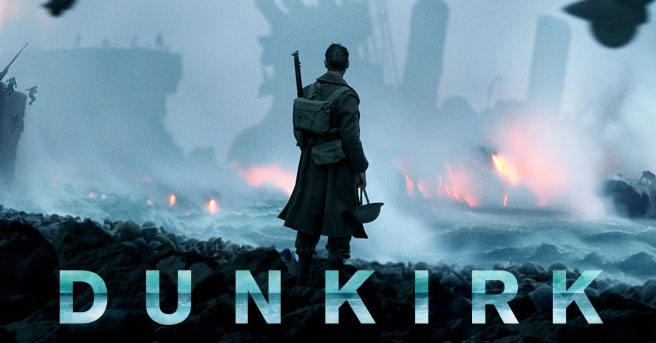Originally published at: REVIEW OF DUNKIRK - People of Con
Grade: A+

Author: Ariel Landrum
Many war movies have attempted to give you a front-row seat to the horrors within. In my opinion, none have done an amazing job of doing so until I experienced Dunkirk in IMAX. Dunkirk differs from other war movies because director Christopher Nolan shoves you into the thick of it. This incredible film portrays the real-life evacuation in Dunkirk, France, between May 26 to June 4, 1940.
The beginning of the feature opens to a huge sweeping view of men waiting for rescue in line at the beach. As the story progresses and the war continues, the lines thin out due to the loss of life. The visual dynamic of lines shortening gives a truthful perspective of the atrocities. These strong visual representations showed that Dunkirk decided to veer from the Hollywood “hero-saves-all” war flicks I grew up with. They focused on the severity of the situation the soldiers were in. With great realism, the movie expertly shows that it took an effort of more than just a couple of rag-tag heroes to escape the Germans surrounding the beach.
To maintain authenticity, Nolan used a minimal dosage of CGI. Instead, you are engulfed with a variety of close encounters with war. All around, battleships are bombed and sinking, British forces are seen swimming in an oil-inflamed sea, and you may get a bit queasy by the dogfights. The picture is shot so well that you see everything that goes on, and Nolan ensures you won’t miss a beat.
One of the more prominent features of the film is that it focuses on war as if it is the story’s main character, the true antagonist. Thus the principal actors are almost deemed as supporting cast. This theme is further enhanced by the movie never using the terms “Germans” or “Nazis,” as the true enemy is war itself.
Dialogue is minimum throughout the one hour and forty-six minute run time. You can probably compress all the dialogue into about twenty minutes if it were to run back to back. Some of this is attributed to the chaos caused by the Luftwaffe, which is incredibly loud and jarring (by Nolan’s design), causing you not to hear some of the actors’ lines. However, with Han Zimmer’s impressive and powerful score, the point of each scene still gets across.
Tom Hardy portrays Farrier, a member of the Royal Air Force. He is probably the film’s most central hero as he singularly takes on the Luftwaffe. Actor Kenneth Branagh does an excellent job of playing the selfless Commander Bolton of the British. Those two characters make up the film’s protagonists. Even though the actors are present on screen for most of the film, their absence really speaks to the gravity of the situation.
Dunkirk is an experience that should not be missed. If you see this movie on anything less than an IMAX-sized screen, you are severely cheating yourself. The 70mm print of the film was perfect as it delivered clarity and grit upon the towering IMAX screen. I was waiting all summer long for this movie, and it exceeded my expectations. This is the summer movie event, and everyone needs to see Dunkirk.
Rated: PG-13 (for intense war experience and some language)
Director: Christopher Nolan
Screenwriters: Christopher Nolan
Starring: Fionn Whitehead, Tom Glynn-Carney, Jack Lowden, Harry Styles, Aneurin Barnard, James D’Arcy, Barry Keoghan, Kenneth Branagh, Cillian Murphy, Mark Rylance, Tom Hardy
Synopsis:
“Dunkirk” opens as hundreds of thousands of British and Allied troops are surrounded by enemy forces. Trapped on the beach with their backs to the sea, they face an impossible situation as the enemy closes in.